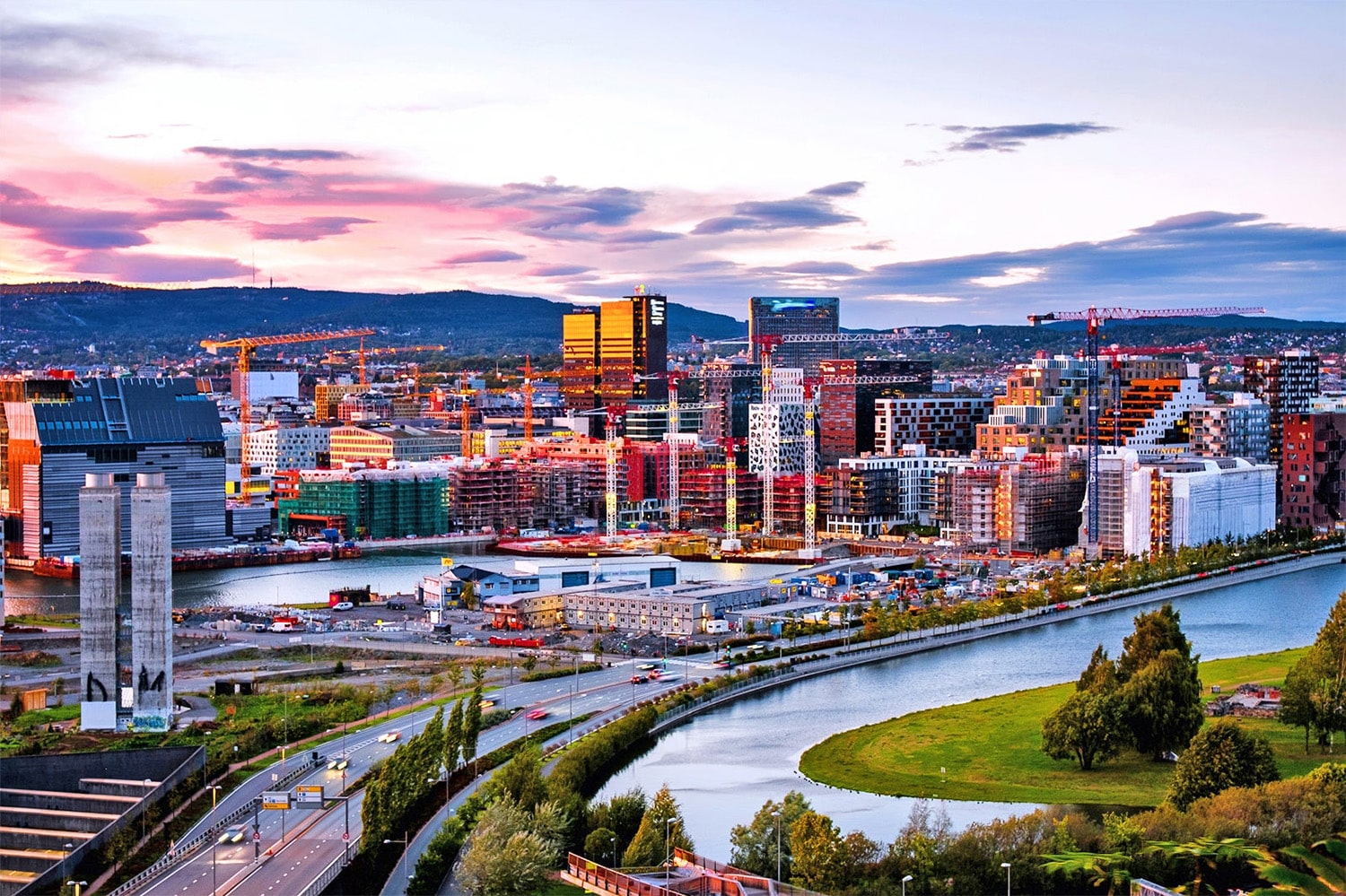
31 interesting facts about Oslo
- 👁️ 298
Oslo, the capital city of Norway, is a fascinating blend of vibrant modern life and rich historical heritage. Situated at the head of the Oslofjord, this city is renowned for its green spaces, museums, and maritime culture. Oslo is not just the political and economic center of Norway; it is also a hub for Norwegian culture, art, and history. With its commitment to sustainable living, Oslo was named the European Green Capital in 2019. Whether you’re interested in exploring the great outdoors or diving into the depths of Viking history, Oslo offers a unique experience for every visitor. Let’s discover some interesting and informative facts about Oslo.
- Oslo was founded in 1040, making it one of the oldest capitals in Scandinavia.
- The city was originally named Christiania, after King Christian IV, following a devastating fire in 1624 but reverted to its original name, Oslo, in 1925.
- Oslo is surrounded by the Marka Forest, a large protected area that provides residents and visitors with outdoor recreational opportunities.
- The Oslo Opera House, home to the Norwegian National Opera and Ballet, features an angular, marble-clad roof that slopes directly into the fjord.
- Oslo hosts the Nobel Peace Prize ceremony annually at the City Hall on December 10, the death anniversary of Alfred Nobel.
- The Viking Ship Museum houses well-preserved Viking ships from the 9th century, showcasing the city’s rich Viking heritage.
- Oslo’s public transport system is one of the most efficient in the world, featuring an extensive network of buses, trams, ferries, and a metro system.
- The city has more than 50 museums, including the Munch Museum, dedicated to the life and works of the Norwegian artist Edvard Munch.
- Frogner Park, the largest park in central Oslo, is famous for the Vigeland Sculpture Park, displaying over 200 sculptures by Gustav Vigeland.
- Holmenkollen Ski Jump, a landmark in Oslo, hosts international ski jumping and Nordic skiing events.
- Oslo was designated the European Green Capital in 2019 by the European Commission for its dedication to conserving natural areas and reducing pollution.
- The Akershus Fortress, dating back to the 13th century, offers stunning views of the Oslofjord and houses the Norwegian Resistance Museum.
- The city’s geographical coordinates make it one of the northernmost capitals in the world.
- Oslo is one of the wealthiest cities in Europe, due in part to Norway’s significant oil industry.
- The Scream, one of the world’s most famous paintings by Edvard Munch, depicts the Oslofjord from the Ekeberg hill in Oslo.
- The Royal Palace in Oslo is the official residence of the Norwegian monarch and is open to the public during the summer months.
- Oslo’s Bygdøy Peninsula is known as the Museum Peninsula, housing several of Oslo’s most visited museums.
- The city has a significant coffee culture, with numerous cafes and coffee bars serving high-quality brews.
- Oslo is working towards becoming carbon neutral by 2030, with initiatives focusing on renewable energy and green public transportation.
- The National Theatre in Oslo is one of Norway’s largest and most prominent venues for performance arts.
- Oslo’s Grünerløkka district is known for its vibrant nightlife, art scene, and array of boutique shops.
- The city has been ranked among the top in the world for quality of life.
- The Oslo fjord is dotted with islands, many of which are accessible to the public by ferry for picnics and swimming.
- Tjuvholmen and Aker Brygge, once industrial docks, have been transformed into trendy waterfront districts with restaurants, art galleries, and nightlife.
- The city’s latitude means that it experiences long days in the summer, with up to 19 hours of daylight, and short days in the winter, with only about 6 hours of daylight.
- Mathallen Food Hall showcases Norway’s culinary diversity, offering everything from traditional Norwegian dishes to international cuisine.
- The Oslo School of Architecture and Design is one of the leading institutions in Scandinavia, reflecting the city’s focus on sustainable and innovative design.
- The University of Oslo, founded in 1811, is the oldest and largest university in Norway.
- The city’s government operates on a parliamentary system, unique among Norwegian municipalities.
- The annual Øya Festival is one of Norway’s biggest music festivals, attracting international artists and music fans.
Oslo is a city where history meets modernity, nature meets urban culture, and sustainability is a way of life. Its commitment to green living, combined with its rich historical tapestry and vibrant cultural scene, makes it a fascinating destination for travelers. From the serene beauty of the fjord and forests to the lively streets of Grünerløkka and the historic landmarks dotting the city, Oslo offers a diverse array of experiences. Whether you’re exploring its museums, enjoying its outdoor spaces, or delving into its culinary delights, Oslo is a city that welcomes all with open arms and a promise of adventure.
Oslo, the capital city of Norway, is a fascinating blend of vibrant modern life and rich historical heritage. Situated at the head of the Oslofjord, this city is renowned for its green spaces, museums, and maritime culture. Oslo is not just the political and economic center of Norway; it is…